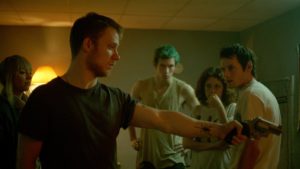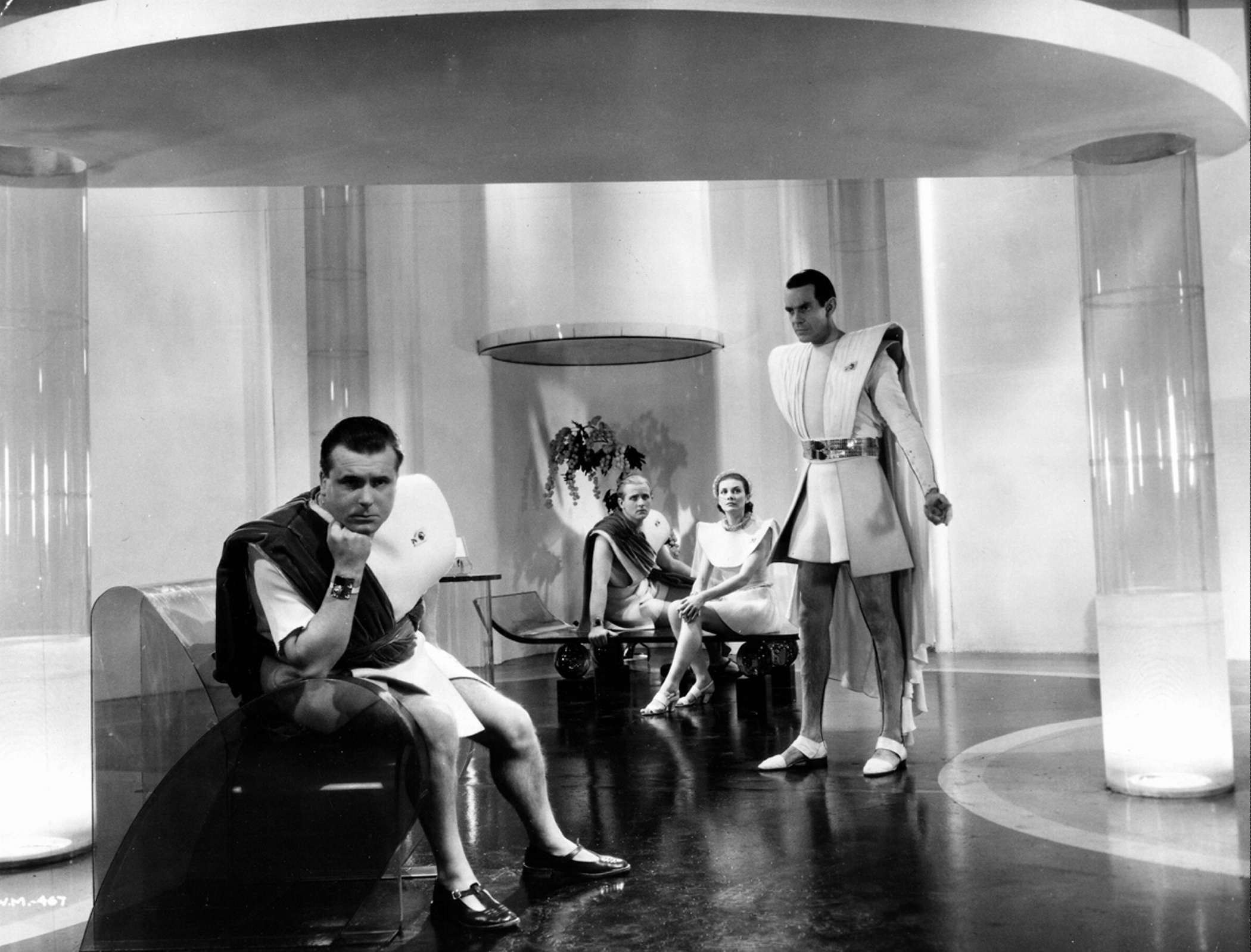 Jeremy Saulnier’s last film, 2013’s Blue Ruin, was a vengeance flick with a flare for equal amounts of comedy and tragedy. It’s characters, narrative and outcomes actually felt satisfyingly realistic. None of the clean-cut, glorified vengeful murder set pieces found in such films as Man on Fire or Law Abiding Citizen, only the bumbling violent foolishness of man’s nature.
Jeremy Saulnier’s last film, 2013’s Blue Ruin, was a vengeance flick with a flare for equal amounts of comedy and tragedy. It’s characters, narrative and outcomes actually felt satisfyingly realistic. None of the clean-cut, glorified vengeful murder set pieces found in such films as Man on Fire or Law Abiding Citizen, only the bumbling violent foolishness of man’s nature.
In Green Room, Saulnier brings that same level of realism to a story that could have easily been turned into a Michael Bay-directed version of Assault on Precinct 13 with amped up violence and gore. The setup, characters and conclusion feel so inhabitable and possible that the film actually ran more of a risk of being dull than being gratuitously bombastic during its runtime. Saulnier walks that line with the skill expected from the director who brought us Blue Ruin.
Much of the talk surrounding this film has been avid praise for Patrick Stewart’s rather unglamorous turn as a backwoods Aryan brotherhood leader who seeks to dispatch “the issue” that has manifested at his club. I’m going to differ a little in my estimation of Patrick Stewart in this film. His turn in the film was rather short of exceptional. Now, before you get your hackles up, let me caveat that previous statement by saying that his less than stellar performance is exactly what the film needed. It’s what makes his character real, grounded and sinister.
This is a role that needed to dispense with the scene-stealing and line-chewing that the role would have tempted other actors to give in to. Stewart is too good of an actor for that. He gives a performance that seethes beneath surface, like that neighbor that turns out to be a serial killer and one would never know because he was so unexceptional to the naked human senses; yet depths of dark hatred and evil broil underneath. This is was Stewart brings to the table in the film. It is a testament to his acumen that I walked away from this film recalling Anton Yelchin, Imogen Poots and, especially, Macon Blair’s—who played lead in Blue Ruin—performances. They were the drive of the narrative. They were where the keen character definitions were being formed and the action of the film was taking place. Stewart was doing what great actors do to accentuate and elevate the other characters in the film. He makes himself less, so that the movie could be more.
It doesn’t hurt, either, that the film is dealing with a subject matter that could not be more timely within the recent spate of trucks bearing down on highway and city pavements with their Confederate and “Come and Take It” flags waving in misguided dedication to a romanticized ‘heritage’ and the seemingly arrogant and deep hatred for non-white, non-American peoples by sections of the populace wrapped up in patriotic and politically-motivated hate speech. Right here in front of us is that hatred manifest in such a way that feels all too believable within the sordid spilled ink of newspaper headlines. An organized group of white supremacist skinheads seeking to rid their domain of a punk band that saw the wrong thing at the wrong time. A punk band fighting against some of the worst denizens of their own race while trying to get out alive.
Green Room may, in fact, be the most punk thing America has seen in twenty-some-odd years. If I were allowed to be more unrestrained with my  language, I would say this movie and what it stands for is “punk as [redacted].”
language, I would say this movie and what it stands for is “punk as [redacted].”
The authority this struggling punk band is up against is not just some blanket denouncement of government control or Capitalism, but something that is perhaps more systemic and insidious within American society: sinful hatred against “the other”—whether that be African Americans, Jews, homosexuals, etc. This punk band is quite literally up against the worst consequences of their own privileges, writ large, and a reckoning must and does take place within the film.
And, yet, even though the film has a cathartic moment of violence at its climax—though far from gratuitous and exploitative–that echoes the need for this type of ideology’s downfall, there is another moment that captures an even greater hope. In a strange twist that parallels the foolishness of the gospels, it is a moment of mercy shown to one of the skinheads by the, then, marauding remainder of the punk constituency that ushers in a rather stark redemptive note.
The skinhead is let go and told to go find help. We don’t honestly know, at the time, if he will or if he’ll just take this opportunity to escape. But with a single declaration towards the end, a lone voice sounds a note of redemption. We see the potential for change in that character. A reckoning is accomplished in the film by way of sword and by way of grace. Each offers up distinctly differing outcomes, yet both become equally inhabitable for the viewer.
When the credits roll, we are relieved that this group’s reign of terror—even if it’s just a local subset of a larger national organization—has been defeated, but we get a peculiar sense that it’s mercy, which leads to the seeds of change, that may provide the better and more hopeful way over the chopping machete of justice. Green Room makes for powerful storytelling that is entertaining, cathartic and a thoughtful way to work through some of the systemic sins of our current society today.

